|
|
|
 |
|
|
Socio economy (Gellap Ost)
PART 1: Ecological-economic analysis of ranching systems in southern Namibia
- Problematic
Desertification occurs in southern Namibia but the observation of the phenomenon at human life time scale is rendered very difficult by the stochastic rainfall, where precipitation varies from year to year but their distribution during the rainy season is also very variable. Thus, there exists a high variability in the biomass produced as well as in species observed yearly. Still, conservation efforts are needed nationwide in order to ensure that the next generations of users will also be able to generate income from the rangelands, the most important land use in southern Namibia. Namibian rangelands are integrated in the globalized world and therefore are prone to quick changes which might also impact on the rangeland health.
- Goal
Our research aims at investigating the interactions among some economic, social and ecological components of the range agro-ecosystem at the level of the farm, and how these interactions may lead to range degradation. We focus on commercial farms.
In addition, we look more specifically at the impact of farm size on management, as well as the effects of different management systems on the range. A special look will be given at the different breeds being used in the region: the farmer rationale behind the choice will be investigated and compared to their computed impact on the range.
- Methods
Our main tool is a bio-economic model, built in cooperation with ecologist A. Popp to analyse farmer strategies of land use in the long term. The model is to date a dynamic Linear Programming model programmed using the GAMS software. We also rely on qualitative analyses of in-depth interviews with experts and farmers to develop a more holistic view of the ecological-economic process within the ranching systems of southern Namibia. We operate with a case study approach, where in total more than 30 farmers, experts and authorities have been interviewed from 2005 to 2007.
PART 2: Case study in the area of Keetmanshoop
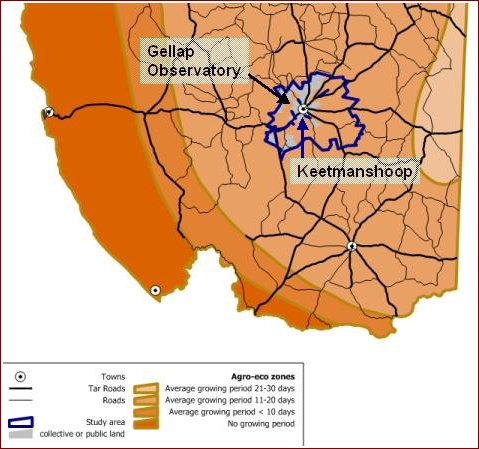 |
The study area was defined in an interdisciplinary effort together with A. Popp S09, according to criteria of homogeneity in the plant communities, rainfall and carrying capacity of the range. The study area is in a sub-urban belt of the town of Keetmanshoop.
Average carrying capacity in the area is 1 SSU (Small Stock Unit) on 5 ha. On average the group of interviewed farmers sticks to these value with a stocking rate of 1 Ewe SSU per 8 ha, but there are big individual variations.
Fig. 1: Map of the study area in its infrastructure and agro-ecological context (adapted from MAWF, Namibia) |
The main production types of the area:  Fig. 2: Pictures from left to right: Karakul sheep for skin production, cattle for meat production and milk supply at farm level, dorper sheep for meat production , goats for meat production (Stephanie Domptail,2005) Fig. 2: Pictures from left to right: Karakul sheep for skin production, cattle for meat production and milk supply at farm level, dorper sheep for meat production , goats for meat production (Stephanie Domptail,2005)
PART 3: Results
Farmers' perception of "good" range
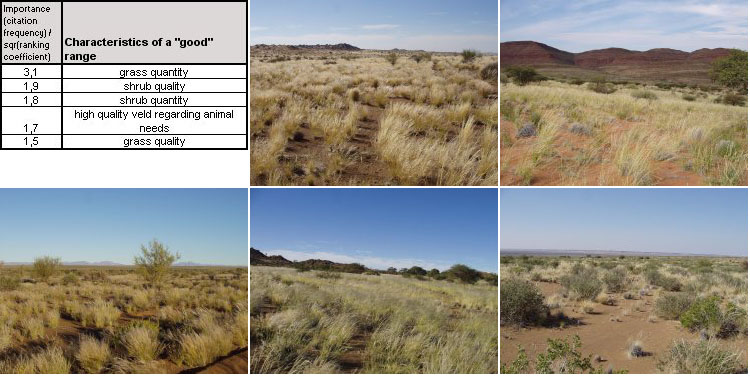
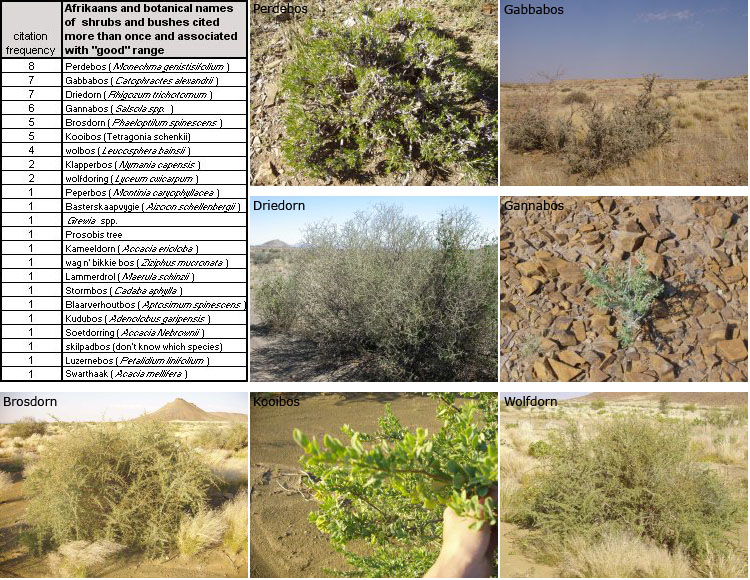
Farmers' perception of "bad" range
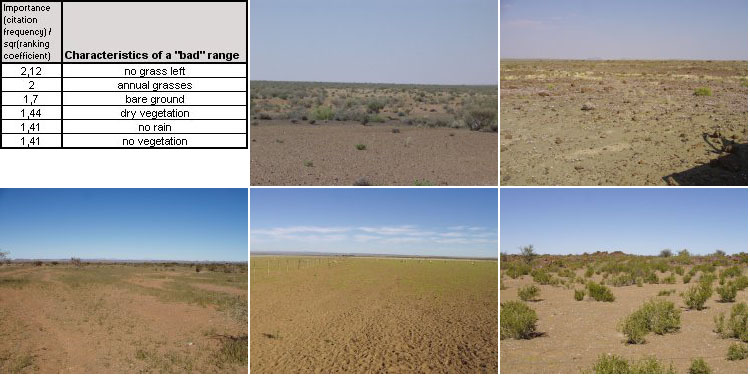
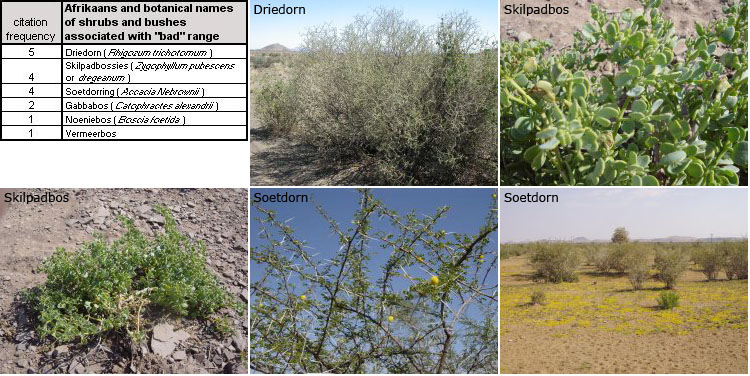
Impact of farmers' preferences on optimal stocking strategies
We investigated the impact of farmer preferences on optimal farmer strategies. Fig. 3 shows optimal farming strategies for 4 different preferences in objectives: 'A' on the one extreme with a high preference to conserve the range, 'B', 'C' and 'D' on the other extreme with a high preference to maximize income.
The strategies differ with respect to the average stocking rate applied, the amplitude of the variation in herd size following the stochastic rainfall and reliance on purchased fodder when produced biomass is insufficient.
Note that the average stocking rate observed in the area is slightly lower the one of stocking strategy C. Important variations in herd size and low level of degradation characterize stocking strategy C.
Trade-offs between income generated and range degradation are not constant, they increase when we move from D to A strategies. For example between strategies C and B, there is only a small difference in stocking rate although the difference in land degradation is important.
PART 4: Further steps
- Sensitivity analyses of the stochastic model are carried on and analysed.
- Content analysis of interviews is carried on.
- Farmers preferences for livestock types will be analyzed in their ecological and economic context.
|
|
|






